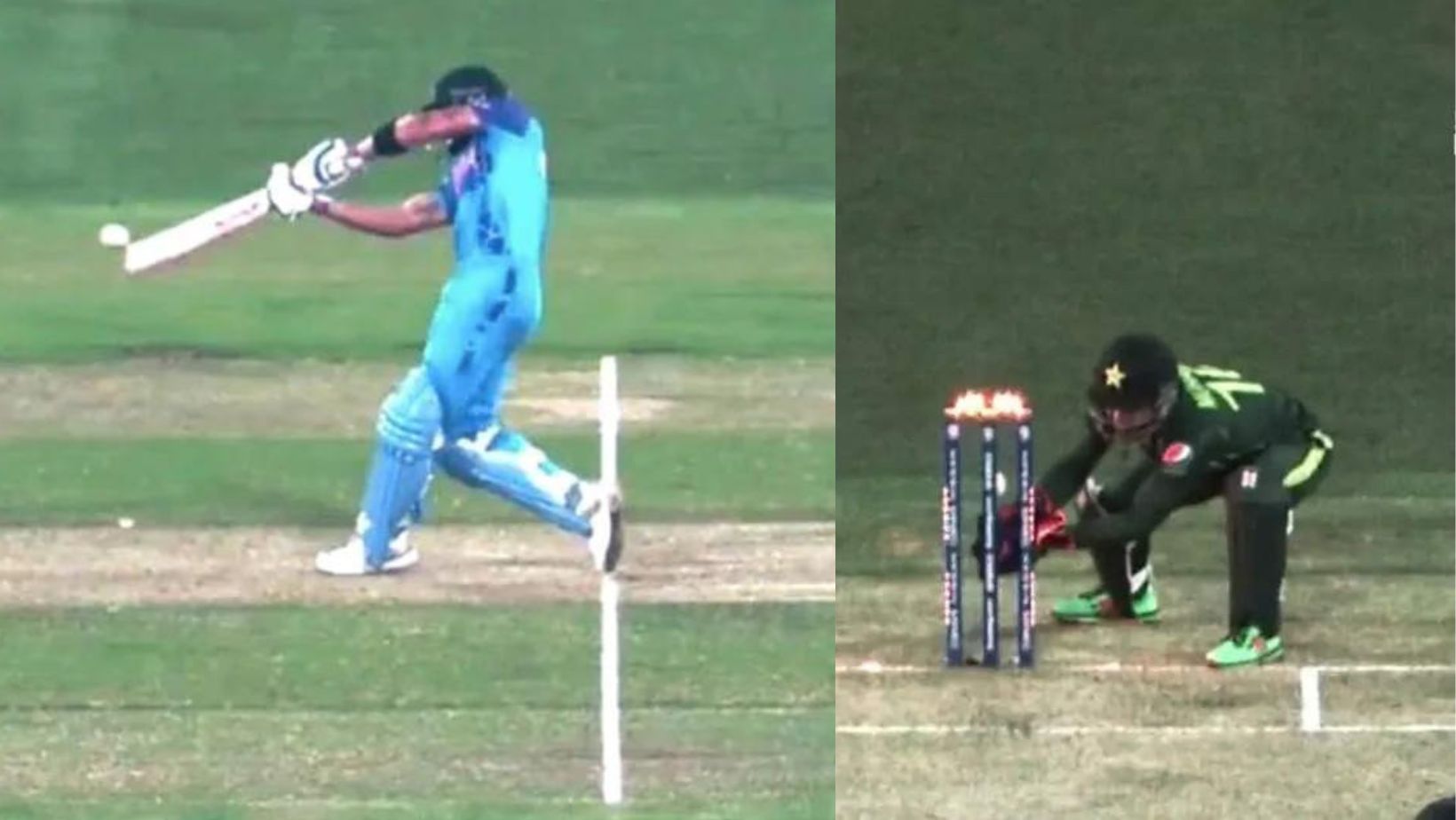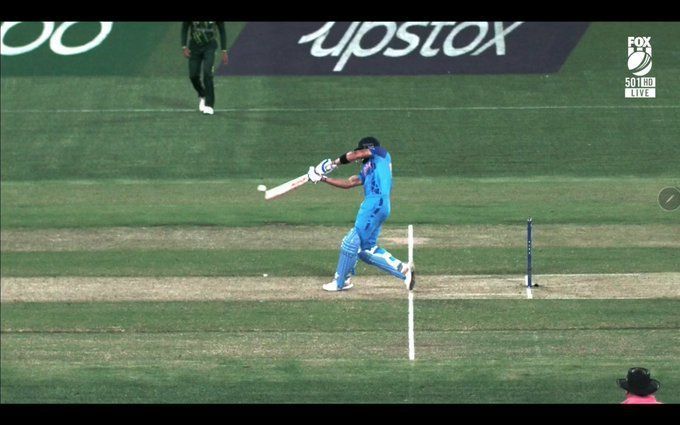
T20 World Cup 2022: Decoding the 3 major controversies from the India-Pakistan match
It has been a long time since an India-Pakistan clash saw controversy. But in the T20 World Cup clash in front of 90,000-plus people on Sunday, October 23, there were three of them.
The match ended in India's favor by a margin of four wickets. After a poor start, Pakistan put up a par total of 159, riding on half-centuries from Shan Masood and Iftikhar Ahmed. Arshdeep Singh completed his redemption with three wickets while Hardik Pandya also chipped in with a spell of 3/30.
The second essay was all about Virat Kohli, as it has been a norm in this fixture since his debut. With five of the top-six not scoring more than 15 runs, Kohli played arguably his best T20I knock - 82* (53). Pandya, meanwhile, played an atypical 40 (37). With one run required off the last ball, Ravichandran Ashwin's chip over mid-off did the job for India.
However, none of these aspects are donning headlines and social media trends as the three controversial umpiring decisions. Below, we'll decode them one at a time.
#1 The no-ball was the biggest controversy of the India-Pakistan match
Perhaps the biggest moment of the game came when India needed 13 runs off the last three balls. Kohli was on strike and left-arm spinner Mohammad Nawaz, who had done well so far in the over, bowled a high full-toss. The batter swung across the line and the ball clipped the square-leg fielder's hand to go over for a six.
The square-leg umpire Maraius Erasmus didn't give it a no-ball but Kohli appealed. The two umpires came together and called it a no-ball. It sent the Pakistani players into a frenzy. Led by skipper Babar Azam, they pleaded with the umpires but to no avail. The match came down to six runs off three balls.
Clause 41.7.1 of the rule book says:
“Any delivery, which passes or would have passed, without pitching, above waist height of the striker standing upright at the popping crease, is to be deemed to be unfair, whether or not it is likely to inflict physical injury on the striker. If the bowler bowls such a delivery the umpire shall immediately call and signal No ball.”
When the ball came in contact with Kohli's bat, it was well above his waist. The Indian batter stood upright as well. The ball wasn't dipping a lot to go below Kohli's waist but it wasn't going straight either, making it a 50-50 call.
The interesting thing, however, is that in such close decisions, if the batter is outside the crease, umpires avoid giving it a no-ball. Kohli wasn't inside the crease but his backfoot was on the line - something which many Pakistani fans objected to.
Here's where the vagueness of the law helped India - it isn't defined whether "at the popping crease" means inside the line or on the line. If it was the latter, Kohli was safe by all means, but if it was the former, the umpires could have favored the bowler.
Moreover, the Marylebone Cricket Club (MCC) rules don't allow waist-height no-balls to be referred to the third umpire unless a wicket falls on it. This meant that had Kohli gotten out instead of hitting a six, the umpires could have reviewed it with the third umpire.
Why Erasmus took extra time to give it a no-ball and whether the ball would've dipped below Kohli's waist (no technology has been used to determine this yet) are subjective questions. The on-field call was legal, though based on a vague law.
#2 The lucky free-hit for India
To make matters worse for Azam's team, Nawaz bowled a wide on the free-hit delivery. His second attempt saw Kohli miss a slog and get bowled. But after hitting the stumps, the ball rolled off to third-man, allowing Kohli and Dinesh Karthik to run three.
The umpires again took some time to give it as byes. What followed surprised many. Azam and his fielders once again crowded the umpires, apparently asking for the ball to be declared dead (or null) because it had hit the stumps.
There is no law that says the ball should be declared dead if it has hit the stumps on a free-hit. A dead ball can be called when the bails fall off (because of wind, etc) before the batter has a chance to play, but that wasn't the case on Sunday. As the free-hit was legal, the runs taken were too. Pakistan were just unlucky.
There might be a case for bringing in a law that bars batters from taking runs after their stumps are broken, but that'll be counter-productive. The batters also take runs before they are caught in the outfield on a free-hit. Should the ICC stop counting them as well? This will nullify the free-hit advantage completely.
#3 Axar Patel's 50-50 run-out went against India
On the first ball after India's powerplay overs ended, Axar Patel tucked Shadab Khan's googly to the mid-wicket fielder and started for a single.
Kohli, at the non-striker's end, sent him back. At first look, it seemed like Mohammad Rizwan collected the ball and broke the stumps, catching Axar quite short of the crease. But the Pakistani surprisingly put out an angry reaction, which wicketkeepers generally do when they miss a run-out.
Replays showed that Rizwan did not grab the ball cleanly. Instead, it hit his gloves and deflected towards the stumps. His hands went to the stumps simultaneously.
The gloves definitely hit the stumps but Patel could have been out in only two conditions - if the ball was in contact with Rizwan's gloves when he broke the stumps or if the ball hit the stumps before the gloves did.
It was another close call with a lot of factors involved. From one angle, it looked like the gloves hit the stumps before the ball, while another angle showed the opposite.
The controversy here erupted because of the third-umpire, who didn't look at more than a few replays before judging Axar out. It was an important stage of the match and third-umpires usually take a lot of time even in simple calls, which should have been done here. Indian fans were right to feel confused.

